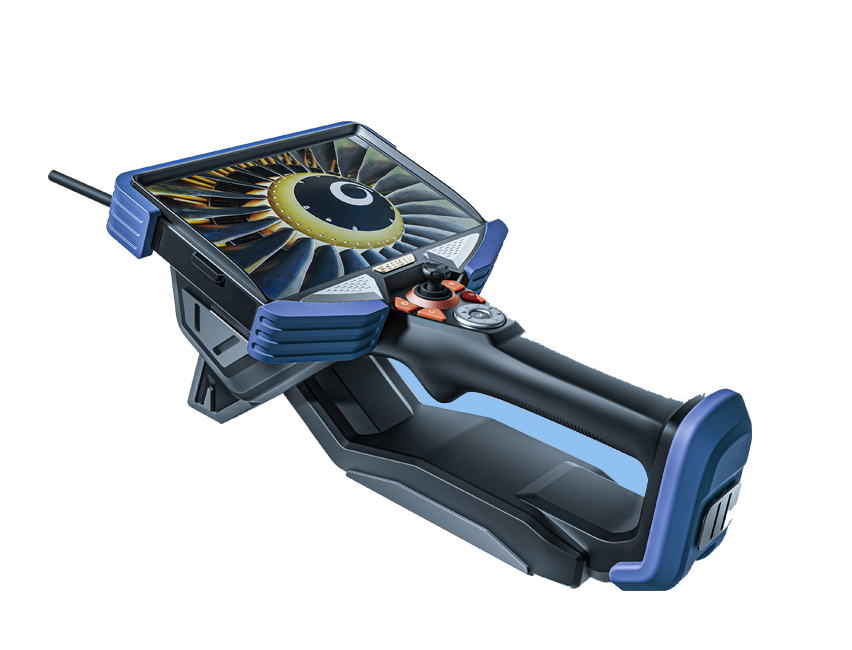Frequently Asked Questions (FAQ) about Industrial Videoscopes
Q1: What is an industrial videoscope used for? A1: An industrial videoscope is used in various industries, including mechanical manufacturing, aerospace, automotive maintenance, power equipment inspection, and more. It enables visual inspections in hard-to-reach or inaccessible areas, allowing professionals to diagnose issues, perform maintenance, and ensure the integrity of equipment.
Q2: How does an industrial videoscope work? A2: An industrial videoscope consists of a flexible insertion tube with a camera at the tip and a display monitor. The insertion tube is inserted into the area to be inspected, capturing real-time video or images that are displayed on the monitor. The videoscope may also have additional features like adjustable illumination, zoom capabilities, and measurement functions.
Q3: What are the benefits of using an industrial videoscope? A3: Some key benefits of using an industrial videoscope include:
- Non-destructive inspection: It allows visual inspection without the need for disassembly, reducing potential damage or disruption to equipment.
- Remote viewing: Videoscopes can reach confined or remote areas, enabling inspections in inaccessible spaces.
- Real-time imaging: The videoscope provides immediate visual feedback, allowing professionals to make on-the-spot assessments and decisions.
- Documentation: Videoscopes often have the capability to capture images or record videos, facilitating documentation for analysis, reporting, and future reference.
Q4: What are the different types of insertion tubes available for industrial videoscopes? A4: Industrial videoscopes come with a variety of insertion tubes to suit different applications. Common types include rigid tubes, semi-flexible tubes, and flexible tubes. Rigid tubes provide stability and are suitable for straight inspections, while flexible tubes offer greater flexibility to navigate through bends and curves. Semi-flexible tubes strike a balance between rigidity and flexibility.
Q5: How do I choose the right videoscope for my application? A5: When selecting an industrial videoscope, consider the following factors:
- Diameter and length of the insertion tube, depending on the access requirements of your inspection area.
- Image quality and resolution to ensure clear visibility.
- Articulation capability if inspections require navigating around corners or bends.
- Lighting options and adjustability for proper illumination.
- Battery life and power source options for extended operation.
- Additional features like measurement functions, recording capabilities, or data transfer options.
Q6: How should I maintain and clean my industrial videoscope? A6: Regular maintenance and proper cleaning are important to ensure the optimal performance and longevity of your videoscope. Follow the manufacturer’s guidelines for cleaning and maintenance procedures. Typically, this involves using a soft, lint-free cloth or a cotton swab with a mild cleaning solution to wipe the external surfaces. Avoid using abrasive materials or harsh chemicals that could damage the videoscope. Additionally, ensure proper storage in a clean and dry environment when not in use.
Q7: Can an industrial videoscope be used in hazardous environments? A7: Some videoscopes are designed for specific hazardous environments, such as those with explosive gases or liquids. These videoscopes are typically labeled as “intrinsically safe” and comply with safety standards for use in potentially explosive atmospheres. It is important to select the appropriate videoscope that meets the safety requirements of your specific hazardous environment.
Q8: Can an industrial videoscope be used for underwater inspections? A8: Yes, there are videoscope models available that are specifically designed for underwater inspections. These videoscopes are waterproof and can withstand immersion in water at specified depths. When performing underwater inspections, ensure that the videoscope is properly sealed and meets the required waterproof rating.
Remember to consult the manufacturer’s instructions and guidelines for specific information and recommendations related to your industrial videoscope model.


